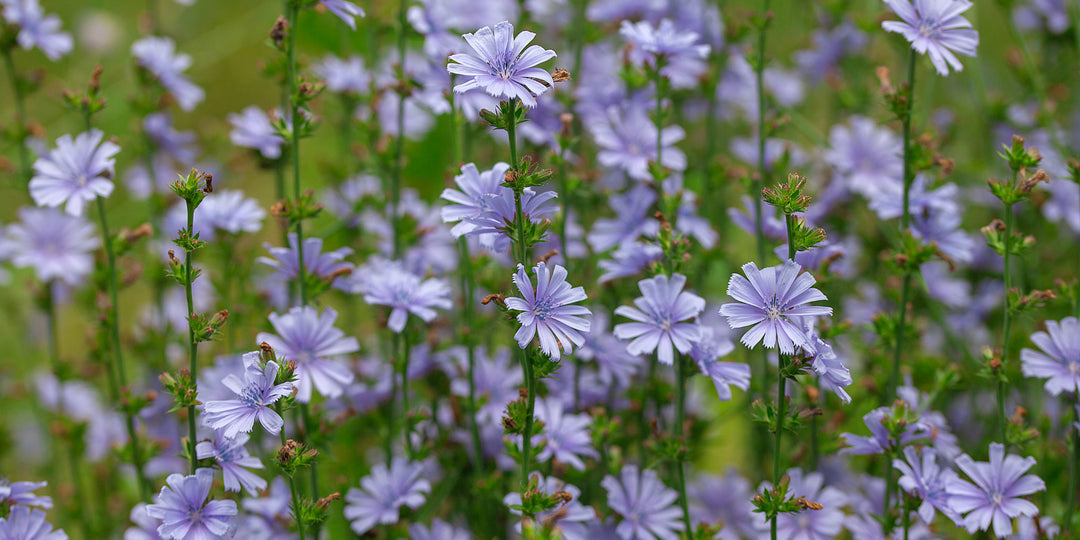Exploring Mugwort: Brief History, Uses, and Recipes

Mugwort is an aromatic herb with a rich history in traditional medicine and culinary applications that offers a unique flavour (often compared to a combination of sage, mint, and camomile) and numerous health benefits.
As we delve into the world of mugwort, learn about its nutritional properties, and explore a delightful recipe for mugwort rice, and mugwort hot chocolate that showcases its unique versatility in the kitchen.
Benefits of Mugwort:

Mugwort, scientifically known as Artemisia vulgaris, is rich in essential oils, antioxidants, and various nutrients that contribute to its potential health benefits. There are notable advantages of incorporating mugwort into your diet:
-
Digestive Aid: Mugwort has been traditionally used to support digestion by stimulating the production of digestive enzymes, easing bloating, and promoting healthy gut flora.
-
Menstrual Support: Mugwort is believed to have properties that may help regulate menstrual cycles, reduce menstrual cramps, and alleviate symptoms associated with premenstrual syndrome (PMS).
-
Antioxidant Powerhouse: Mugwort contains potent antioxidants, such as flavonoids and phenolic compounds, which may help protect the body against oxidative stress and cellular damage caused by free radicals.
-
Relaxation and Sleep Aid: Mugwort has been used for centuries to promote relaxation and improve sleep quality. Its calming properties may help reduce anxiety, stress, and insomnia. It's also been said to cause vivid dreams.
Mugwort rice is a dish that combines the nutritional benefits of rice with the unique flavours of mugwort and has a long-standing history in Asian cuisine. This traditional dish holds cultural significance and has been enjoyed for generations.
The roots of mugwort rice can be traced back to ancient times in Asian countries such as Korea and Japan. In these cultures, mugwort has been highly regarded for its medicinal properties and its association with folklore and traditional beliefs. Mugwort is often considered a sacred herb that is believed to ward off evil spirits, promote good fortune, and bring protection.
In Korean cuisine, mugwort (known as "ssuk" in Korean) is used as an ingredient for various dishes. Mugwort rice, known as "ssukbap," is a classic example of how mugwort is used in traditional Korean recipes. It is typically enjoyed during special occasions and festivals, such as the Dano Festival in late spring, where mugwort is abundant. The resulting dish features vibrant green hues, reflecting the natural color of mugwort.
Mugwort rice holds symbolism beyond its culinary aspects. In Korean culture, green-colored foods are often associated with vitality, health, and new beginnings. It is frequently consumed during transitional periods, such as the change of seasons or significant life events, to invite positive energy and renewal.
Recipes
Mugwort Rice

Ingredients:
- 1 cup of rice
- 2 cups of water
- 2 tablespoons of Foothills Naturals Mugwort
- Salt to taste
Instructions:
- Rinse the rice thoroughly under cold water until water runs clear. This will remove any excess starch.
- In a pot**, combine the rinsed rice, water, dried mugwort, and a pinch of salt.
- Bring the mixture to a boil over medium heat, then reduce the heat to low, cover the pot, and let it simmer for about 15-20 minutes or until the rice is cooked and tender.
- Once the rice is ready, fluff it with a fork, and let it rest for a few minutes.
- Serve the mugwort rice as a flavourful and nutritious side dish to accompany your favourite main course.
**you can also do this in a rice maker in the same manner you would normally cook rice.**
Mugwort Hot Chocolate
Note: Mugwort hot chocolate has a distinct herbal taste, please feel free to adjust the amount of dried mugwort infused in the milk to your preference.

Ingredients:
- 2 cups of milk (dairy or plant-based)
- 2 tbsp of unsweetened cocoa powder
- 2 tsp of granulated sugar (adjust to taste)
- 1 tbsp of Foothills Naturals Mugwort
- 1/2 tsp of ground cinnamon
- 1/4 tsp of ground nutmeg
- Optional toppings: whipped cream, chocolate shavings, cinnamon powder, marshmallows
Instructions:
- In a small saucepan, pour the milk and heat it over medium-low heat until it becomes hot but not boiling.
- Add the dried mugwort to the milk and let it steep for about 5 minutes, allowing the mugwort's flavors to infuse into the milk. Stir occasionally.
- After 5 minutes, remove the saucepan from the heat and strain the milk to remove the mugwort leaves.
- Return the infused milk to the saucepan and place it back on the stove over low heat.
- Whisk in the cocoa powder, granulated sugar, ground cinnamon, and ground nutmeg until they are well combined and the mixture becomes smooth.
- Continue to heat the mixture, stirring constantly, until it reaches your desired drinking temperature.
- Once heated, pour the mugwort hot chocolate into mugs.
- If desired, top each mug with whipped cream, a sprinkle of cinnamon powder, or chocolate shavings.
- Serve the mugwort hot chocolate immediately and enjoy its comforting flavours.
Mugwort, with its unique flavor and potential health benefits, offers a delightful addition to your culinary repertoire. Whether you incorporate it into teas, soups, pancakes, or dishes like mugwort rice, this versatile herb adds an aromatic twist to your meals while potentially supporting digestion, menstrual health, and relaxation. Embrace the charms of mugwort and explore its flavors and benefits to enhance your culinary adventures and well-being.





